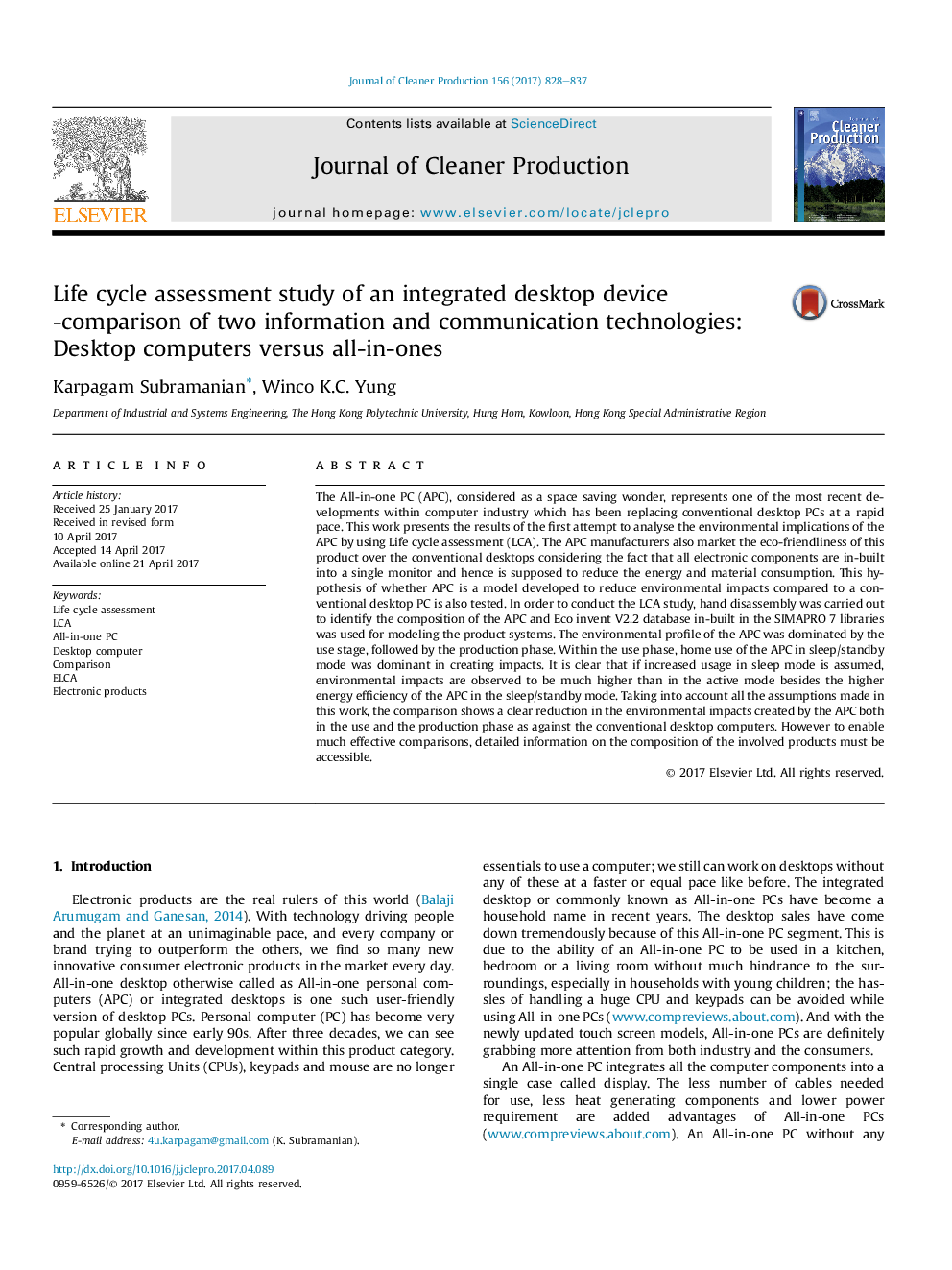| Article ID | Journal | Published Year | Pages | File Type |
|---|---|---|---|---|
| 5481038 | Journal of Cleaner Production | 2017 | 10 Pages |
Abstract
The All-in-one PC (APC), considered as a space saving wonder, represents one of the most recent developments within computer industry which has been replacing conventional desktop PCs at a rapid pace. This work presents the results of the first attempt to analyse the environmental implications of the APC by using Life cycle assessment (LCA). The APC manufacturers also market the eco-friendliness of this product over the conventional desktops considering the fact that all electronic components are in-built into a single monitor and hence is supposed to reduce the energy and material consumption. This hypothesis of whether APC is a model developed to reduce environmental impacts compared to a conventional desktop PC is also tested. In order to conduct the LCA study, hand disassembly was carried out to identify the composition of the APC and Eco invent V2.2 database in-built in the SIMAPRO 7 libraries was used for modeling the product systems. The environmental profile of the APC was dominated by the use stage, followed by the production phase. Within the use phase, home use of the APC in sleep/standby mode was dominant in creating impacts. It is clear that if increased usage in sleep mode is assumed, environmental impacts are observed to be much higher than in the active mode besides the higher energy efficiency of the APC in the sleep/standby mode. Taking into account all the assumptions made in this work, the comparison shows a clear reduction in the environmental impacts created by the APC both in the use and the production phase as against the conventional desktop computers. However to enable much effective comparisons, detailed information on the composition of the involved products must be accessible.
Related Topics
Physical Sciences and Engineering
Energy
Renewable Energy, Sustainability and the Environment
Authors
Karpagam Subramanian, Winco K.C. Yung,
